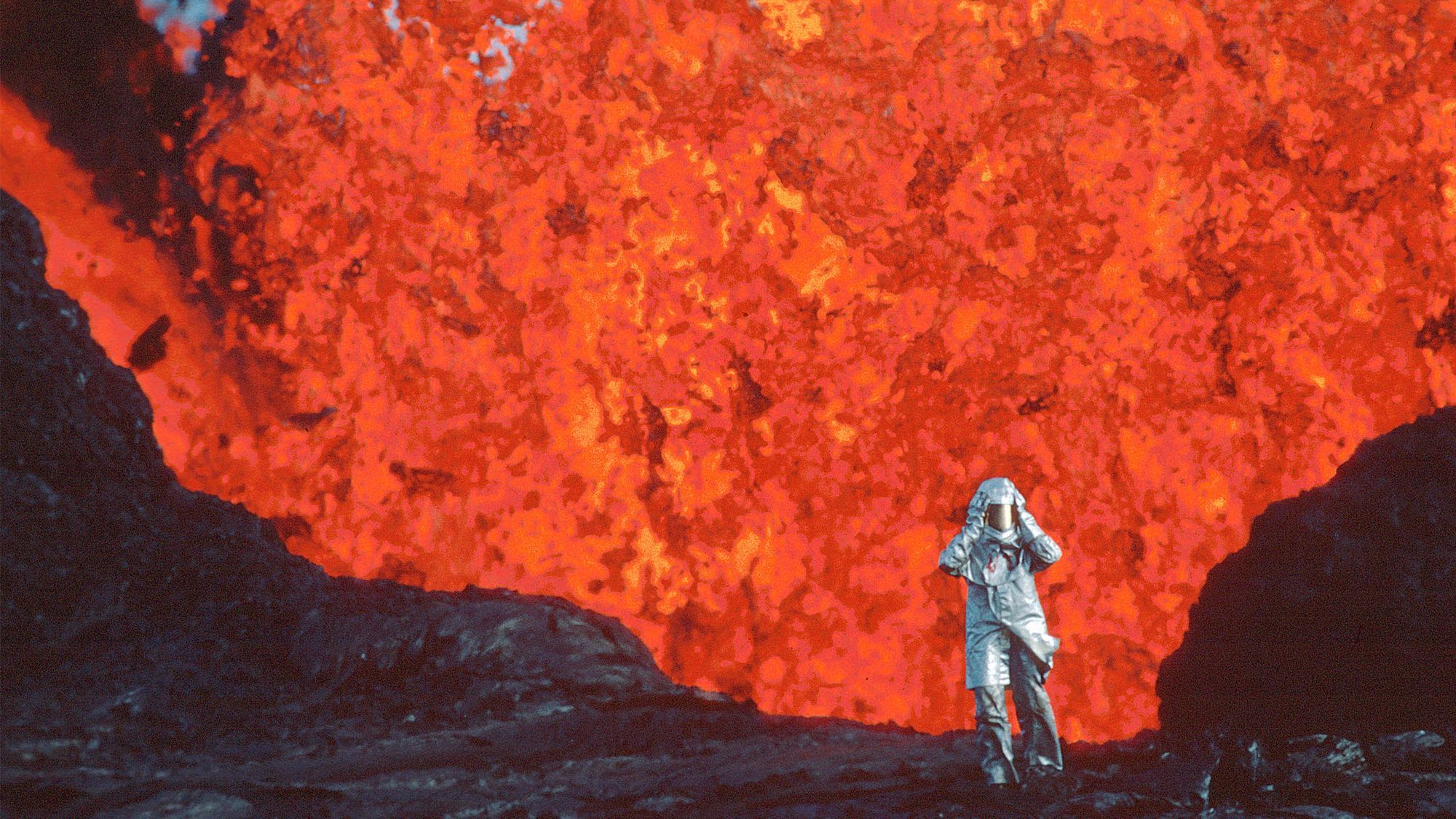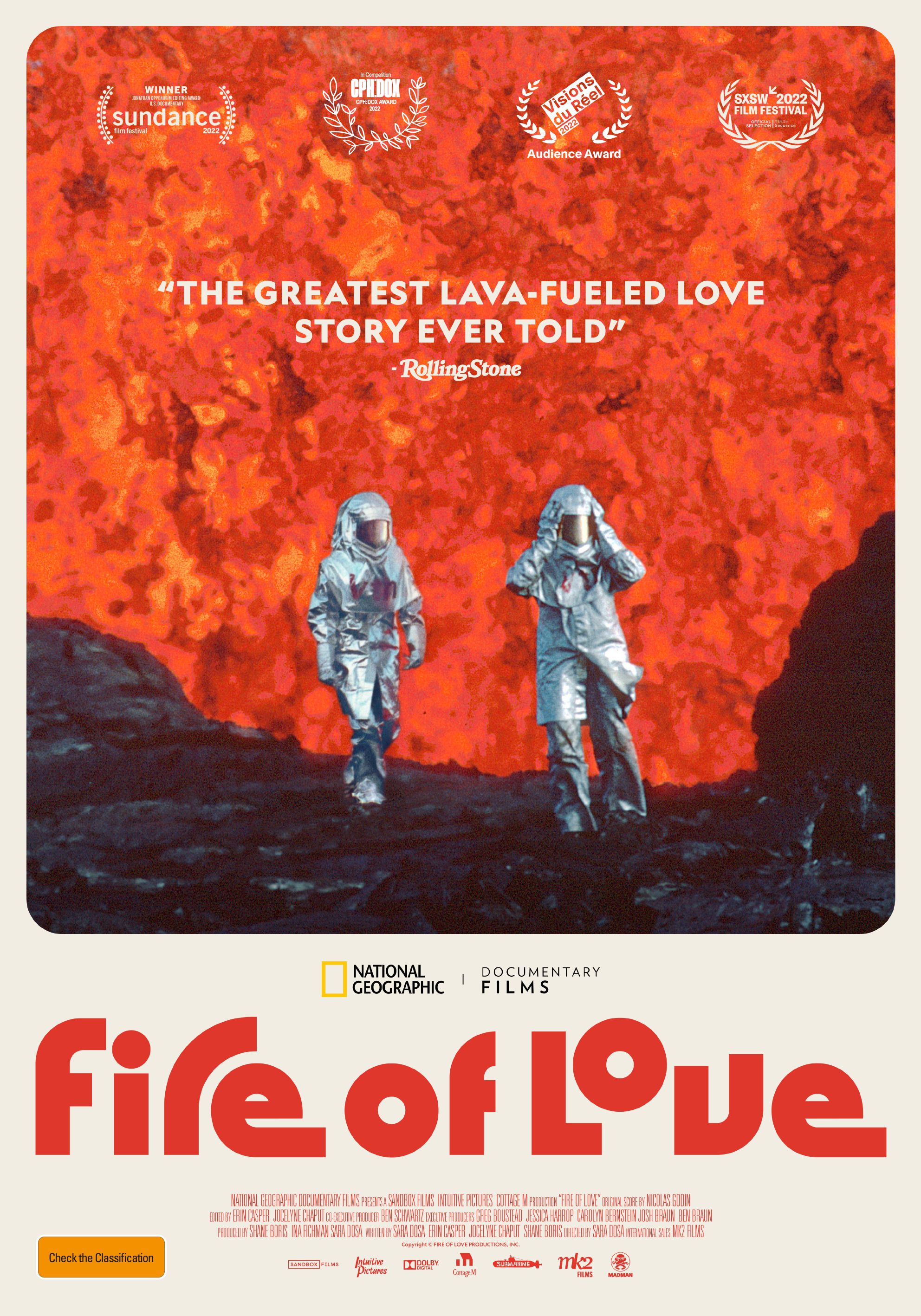Fire of Love (2022): A Movie Review
A documentary of love, fire, creation, destruction, and volcanoes.

Great documentaries don’t come along that often. A year without at least one superb fictional film released, destined to be recognised as great once the dust settles, is a strange year. Often, there’s a handful. With non-fiction, truly great films, that stand the test of time, arrive on a slower schedule.
When they do come along, though, watching them in the cinema can take you places other films can’t. You don’t get lost in the narrative as much as pulled in and engaged. They can inspire you more directly, without the filter of a fictional world and scripted lines and moments.
Audience reactions watching non-fiction in the cinema are different, too. You hear and see reactions in the movie theatre that are authentic and unfiltered, in contrast to the ones staged and skilfully manipulated by fiction. It is a different, great cinema experience of its own.
Fire of Love is a superb documentary, built around an incredible archive of beautiful and awe-inspiring volcano footage. It is also unusual for a non-fiction film: it has artistic visuals and a sense of playful adventure usually reserved for fiction.
Recently I saw a trailer for Werner Herzog’s upcoming film, The Fire Within: Requiem for Katia and Maurice Kraft. It takes the two French volcanologists, who were briefly and memorably included in Into the Inferno (2016) — Herzog’s previous feature about volcanoes — and makes them its subject.
The trailer knocked me out, and the fact Herzog had went back to explore the footage of Katia and Maurice Kraft six years later in a more expanded form spoke for itself.
I made a mental bookmark to look out for Herzog’s film, resigned to the fact it likely wouldn’t get enough distribution for me to watch in the movie theatre. Cinema distribution is a little fucked up right now, and Herzog documentaries don’t get great distribution at the best of times.
So when I saw the poster for Fire of Love at my local independent cinema, fireworks went off in my mind. I recognised the still from the amazingly fiery lava shots of Katia and Maurice Kraft, and the name sounded like what I remembered.
They were showing the new Herzog film!

Confusion quickly followed, seeing the directing credit as Sara Dosa. But… this has to be the Herzog film, right? I thought. Maybe the project was passed to another director. There couldn’t be two documentaries on this subject being released, using the same archive of footage, at almost the same time.
Google quickly corrected me. There are, in fact, two documentaries this year that take the archive footage of Katia and Maurice Kraft as their subject. The one from Herzog, The Fire Within, is still to be released. The one from Sara Dosa, Fire of Love, is the one I found showing locally, and went to see.
It is a strange state of affairs, in strange times. I’m sure there must be a story behind the simultaneous productions, but I was unable to turn up anything about it. No juicy conflict between directors could be detected on search engines.
In any case, this review concerns Sara Dosa’s Fire of Love. And it is so good it leaves me doubtful Herzog can do better (though I still can’t wait to see what he brings to the same footage, and contrast the two films once both are available).
The foundation of the film is the footage the Krafts spent their careers and lives shooting while out on the field — which is mesmerising. Their archive is extensive, has a creative sensibility, and they have fun on camera while carrying out their work. They are obsessed with volcanoes on some level (especially Maurice), but the intention is to save lives (especially Katia) — which led them to switch their studies from red volcanoes (spectacular, deadly in some circumstances) to grey volcanoes (tremendously explosive, unpredictable, and the real killers). Their footage is the most beautiful and unique of volcanoes and lava flows I have seen. It is shot with an artistic eye and joyful spirit.
Both the Krafts are included in a lot of the footage, and the way they let their personalities show through tells a remarkable story, and love story, in itself. It wouldn’t surprise me if they were the source material for Wes Anderson’s The Life Aquatic with Steve Zissou (2004). They wear red beanies, have a brave and independent spirit, are quirky as hell, and laugh a lot.
Dosa’s treatment of the footage, and what she brings to it, is impressive. She works with a deft hand. The editing is fluid, making great selections to capture a bigger story in a well-paced, constantly moving way. When the film slows down (the baseline pace is deliberately meditative), it is for a reason. The exceptional but subtle beauty of some clips comes through as the camera pauses on them longer than usual.
The style of writing, and narration from Miranda July, is bold, going with a style that aims not for objectivity but a subjective meditation and examination of the love story that follows closely behind the science, and a spirit that brings out something Bigger from the footage. This is a technique almost signature to Herzog in non-fiction films (though really, it shouldn’t be) — to pierce through what we are watching to some mystic truth.
Some will see criticism to be made here, or think it fails in its goal. Miranda July’s narration worked for me. I loved the tone, thought it struck a good balance between dramatic and informative, and found it both soothing and guiding, enhancing the footage and cutting a clear path through its story.
The focus of this film is on the love story behind the Kraft footage, which the tagline confirms.
THE GREATEST LAVA-FUELED LOVE STORY EVER TOLD
It is a great love story. The personalities of Maurice and Katia, and the contrasts between them, show a dynamic that is captivating. The differences illustrated between them are dead-on. Maurice is vivacious, good natured but restless, always seeking, searching, and fascinated with the energy of volcanoes. Katia has an energy that feels enlightened, with more anxiety but always with an eye on the big picture. She is weird and quirky in her own ways. Her worst fear is that Maurice will disappear out of sight over the rocks and never be seen again.
You will learn a lot about volcanoes through this film in the best way possible. Incidentally — and it will leave you thirsting for more. It is no geography lesson. Part of me wonders if this was the motive behind the way the Krafts shot their footage in such a fun and human way. It’s the best way to learn.
Contained in the narration are wonderings of why this footage was made, beyond the obvious. It seems shot as more than a scientific study, but also as a celebration of life and love, human endeavour, and a documentation of two souls. Like a puzzle of sorts, to be picked up decades later and made into a documentary of exactly this kind. I love that the narration self-reflects on this.
At the heart of everything is a deep message, which I will leave the film to expound on. Volcanoes, like love, are equally creative and destructive forces.
A cathartic and inspiring love story. Or was it a film about volcanoes?
James Lanternman writes movie reviews, essays, and moonlit thoughts. You can reach him at [email protected].
Previously… Navalny (2022): A Movie Review
